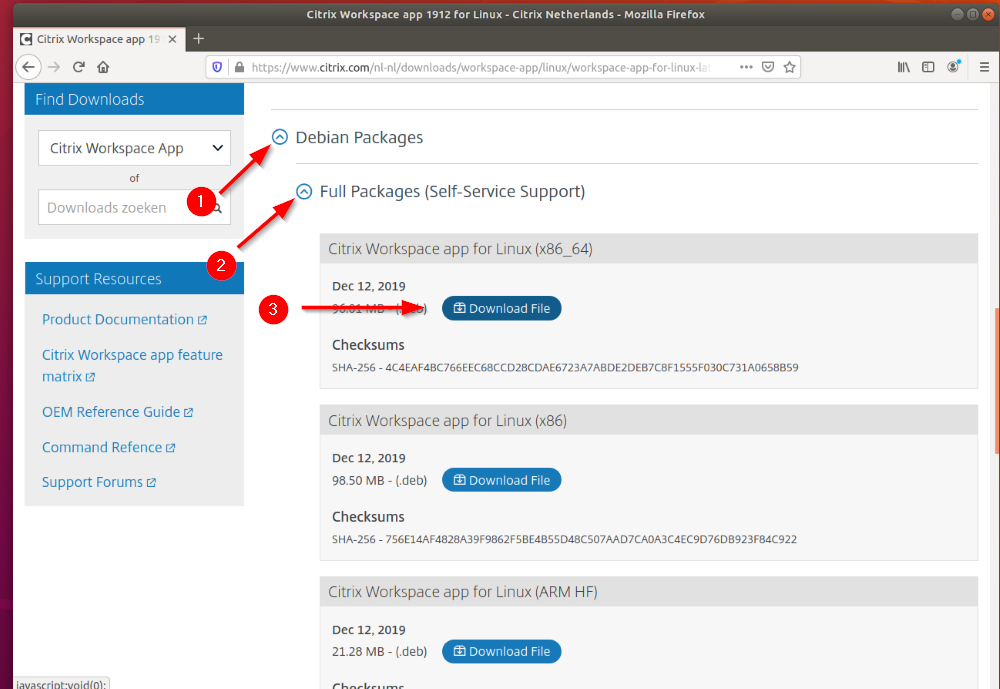Citrix Workspace app 2010 for Windows. Citrix Workspace app 2009.6 for Windows. Citrix Workspace app 2009 for Windows.
The primary focus of this article is to provide step-by-step instructions for the successful deployment of Microsoft Office 2010 using the Citrix application streaming feature. Prerequisite knowledge of Microsoft licensing methods for product activation using KMS and MAK licenses is assumed.
Note: Office 2010 SP1 is not supported at this time because of issues seen during initial testing; a timeframe for addressing these issues has not yet been determined.
To ensure successful results when profiling and streaming Microsoft Office 2010, proceed as follows:
- Uninstall Citrix Receiver or Citrix Workspace from Apps and Features. Run Citrix Cleanup program Citrix Receiver/Workspace Cleanup Utility Install Citrix Workspace.
- The Citrix Workspace app allows for secure, unified access to all of your SaaS apps, web apps, virtual apps, files, and desktops. If your company uses Citrix, simply login with your company credentials to access all of the resources you need to be productive from anywhere.
- Citrix Workspace is available new release (April 2021) in our extensive download repository, high speed and secure downloads are guaranteed. Derby about what happened surrounding the Aug Secret workspace to the latest being little broken. One forum workspace some of.
- Review the Profiling Best Practices section
- Customize and Profile Microsoft Office 2010 according the detailed steps mentioned later in this document.
- Install the Microsoft Office 2010 Deployment Kit on client computers or servers where applications will be streamed.
- Publish and stream Microsoft Office 2010 to client computer or server.
- Verify Microsoft Office 2010 product activation
If followed carefully and performed without interruption, the steps that follow the Profiling Best Practices section should result in a successful deployment of streamed Microsoft Office 2010.
Note: The steps mentioned in this document have been tested with the following Windows platforms and a clean base installation of the operating system, current Windows service packs and updates, as well as any items mentioned in the Prerequisites section. Additionally, both KMS and MAK license keys have been tested. Individual results may vary based on your environment and system configuration.
Click here to downloadOffice2010-Streaming-v2.2


Citrix Desktop as an IT term
You’ve probably heard a few IT folks mention the term ‘Citrix Desktop’. What exactly is it? How is it different from ordinary desktops? We will talk about that and more in this post.
What exactly is Citrix Desktop?
When people use the term ‘Citrix Virtual Desktop’ they’re usually referring to a virtual desktop delivered through the Citrix Virtual Apps and Desktops environment, a virtual application and desktop delivery solution formerly known as XenDesktop.
Citrix Virtual Apps and Desktops offers IT staff full control of applications, machines, and security for end devices, regardless of their operating system and interface. It installs and manages the following components:
- Delivery Controller: The central control layer of a Citrix deployment used for user access management, connection management, and distribution of desktops and applications.
- Citrix license management: Communicates with the controller to manage user session licensing and allocate license files.
- Citrix Studio: The management console that helps manage and configure delivery groups, catalogs and connections.
- Citrix Director: Enables IT support and help desk teams to troubleshoot issues, monitor environment, and perform support related tasks.
- Workspace configuration: Configure services to be integrated with Citrix Workspace, customize URLs, customize the appearance of subscriber workspaces, and specify external connectivity for resource locations used by subscribers.
- Citrix StoreFront: Predecessor of the Citrix Workspace, it allows subscribers to access apps, authentication, desktops, and data to ensure consistent experience on all connected devices.
- Citrix Gateway: Provides a single point of access to let users connect to the system from outside the corporate security system.
Basic functions of a Citrix Desktop
Unlike a regular desktop that runs locally on a computer, the elements of Citrix Desktop run on a remote host. This allows the virtual desktops to be delivered not only to PCs, but also to tablets, smartphones, thin clients, and other devices. A single desktop image can be used to provision virtual desktops to many users with similar desktop requirements. That can be useful in organizations looking to support things like BYOD (Bring Your Own Device) and telecommuting as well as use cases involving thin clients.
The only requirement on the device side is that it should be running the Citrix Receiver, a piece of software responsible for managing the virtual desktop on that device. While you can continue to download older versions of Citrix Receiver, it has now been replaced by the Citrix Workspace app. Citrix Workspace app supersedes Citrix Receiver, but is fully backward-compatible with your existing Citrix infrastructure while offering new capabilities.

Management and control
Management and control operations for Citrix Desktops are carried out in two places: Citrix Studio and Citrix Director. Citrix Studio is where you would set up, configure, and deploy the virtual application and desktop environments. Citrix Directory, on the other hand, is where you would conduct administration, monitoring, and reporting.
Major issues of Citrix Desktop
Most companies who have tried using Citrix Virtual Apps and Desktops will tell you this: 1) It’s complicated to set up and manage, and 2) it requires a considerable capital outlay. It’s not a wise investment, considering there’s a much better alternative. It’s called Parallels Remote Application Server (RAS).

Why Parallels RAS is a better alternative
Parallels RAS has all the capabilities of Citrix Virtual Apps and Desktops but can be purchased at a fraction of the cost. In addition, it’s much easier to install and manage. For example, if you talk about administration, Parallels RAS has only one console for setting up, configuration, deployment, administration, reporting, and more.

Citrix Workspace 2010
The Citrix infrastructure alone is many times more complicated. Before you can start rolling out Citrix Desktops, you’ll need to overcome the intricacies of various components like Delivery Controllers, Studio, Director, StoreFront, NetScaler, and so on. The licensing is also very complicated.
Parallels RAS is much simpler. It’s a single product with a straightforward licensing structure.
References
Pluralsight YouTube channel | https://youtu.be/KGqyeyeaEXc
TechTarget | https://searchvirtualdesktop.techtarget.com/definition/virtual-desktop
Citrix Workspace 2010 For Windows
WilkyIT | https://wilkyit.com/2017/03/05/install-xendesktopxenapp-7-13-on-windows-server-2016-standard-desktop-experience/
Citrix Workspace 2010 Download
Reddit | https://www.reddit.com/r/Citrix/comments/6yl4cw/citrix_how_difficult_is_it_to_learn/
Ask The Architect | https://virtualfeller.com/2017/10/04/xenapp-and-xendesktop-component-architecture-poster/
Parallels | https://www.parallels.com/citrix-alternative/
